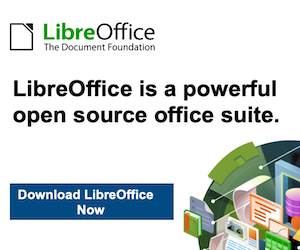Cross-site request forgery (CSRF or XSRF) is a web security vulnerability where an attacker tricks a user into performing unintended actions on a trusted website where the user is authenticated. It exploits the website’s trust in the user’s browser by sending unauthorized commands, often through malicious links or forms, without the user’s knowledge.
How CSRF Works
-
- User Authentication: A user logs into a trusted website (e.g., a bank or email service), and the site issues a session cookie to the user’s browser.
- Malicious Request: The attacker crafts a malicious link, form, or script hosted on a different site (or sent via email, social media, etc.) that triggers an action on the trusted site. For example, a form might submit a request to transfer money or change account settings.
- Browser Trust Exploitation: Since the user’s browser is authenticated with the trusted site (via cookies), it automatically includes the session cookie in the request. The trusted site processes the request, assuming it came from the legitimate user.
Example
-
- A user is logged into bank.com.
- The attacker sends a malicious email with an image tag: <img src=”https://bank.com/transfer?amount=1000&to=attacker”>.
- When the user’s browser loads the image, it sends a request to bank.com with the user’s session cookie, initiating a transfer without the user’s consent.
Key Characteristics
-
- Exploits the trust a website has in the user’s browser.
- Requires the user to be authenticated on the target site.
- The attacker cannot see the response to the forged request (blind attack).
- Typically involves HTTP methods like POST or GET that modify server-side data (e.g., changing passwords, making transactions).
Prevention Techniques
CSRF Tokens:
-
- Include a unique, unpredictable token in each state-changing request (e.g., form submissions).
- The token is tied to the user’s session and validated by the server.
- Attackers cannot forge valid tokens since they lack access to the user’s session.
SameSite Cookies:
-
- Set the SameSite attribute on cookies (Strict or Lax) to prevent browsers from sending cookies with cross-site requests.
- Example: Set-Cookie: sessionId=abc123; SameSite=Strict.
Double-Submit Cookie:
-
- Send a CSRF token both in a cookie and as a request parameter. The server verifies they match.
- Useful when tokens cannot be stored in forms.
HTTP Method Restrictions:
-
- Use safe HTTP methods (GET, HEAD) for read-only operations and restrict state-changing operations to POST, PUT, or DELETE.
- Enforce CSRF checks only for state-changing methods.
User Interaction Verification:
-
- Require re-authentication or CAPTCHA for sensitive actions (e.g., password changes or financial transactions).
Content Security Policy (CSP):
-
- Restrict the sources of scripts and forms to prevent malicious payloads from executing.
Check Referer/Origin Headers:
-
- Validate the Referer or Origin header to ensure requests originate from the trusted domain.
- Note: These headers can be spoofed or suppressed, so they’re not foolproof.
Example of CSRF Protection
<form method="POST" action="/transfer">
<input type="hidden" name="csrf_token" value="unique_random_token">
<input type="number" name="amount" value="100">
<input type="text" name="to" value="recipient">
<input type="submit" value="Transfer">
</form>
-
- Server generates a unique csrf_token for the user’s session.
- On form submission, the server verifies the csrf_token matches the session’s token.
Real-World Impact
-
- Financial Loss: Unauthorized transactions or account modifications.
- Data Breach: Changing account settings (e.g., email or password) to lock out users.
- Reputation Damage: Compromised user trust in the affected website.
Mitigation Best Practices
-
- Always implement CSRF protection for state-changing endpoints.
- Combine multiple defenses (e.g., CSRF tokens + SameSite cookies).
- Regularly test applications for CSRF vulnerabilities using tools like OWASP ZAP or Burp Suite.
- Educate users to avoid clicking suspicious links or visiting untrusted sites while logged into sensitive accounts.
If you need specific examples, code snippets, or details about implementing Cross-site request forgery protections in a particular framework (e.g., Django, Spring, or Node.js), just sound off in the comment section below — we would be most happy to help.






